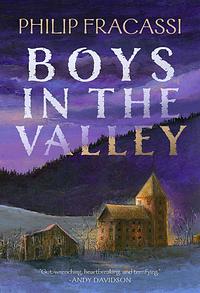Take a photo of a barcode or cover
dark
emotional
sad
tense
dark
tense
medium-paced
Plot or Character Driven:
A mix
dark
mysterious
tense
fast-paced
Plot or Character Driven:
A mix
Strong character development:
Yes
Loveable characters:
Yes
Diverse cast of characters:
No
Flaws of characters a main focus:
Complicated
dark
tense
medium-paced
Plot or Character Driven:
A mix
Strong character development:
Yes
Loveable characters:
Complicated
Diverse cast of characters:
No
Flaws of characters a main focus:
No
challenging
dark
mysterious
tense
medium-paced
Plot or Character Driven:
Plot
Strong character development:
Yes
Loveable characters:
Yes
Diverse cast of characters:
No
Flaws of characters a main focus:
Yes
fast-paced
TRIGGER WARNINGS: murder, violence, and torture involving adults, children and animals, child abuse, domestic violence, forced confinement, self-harm, suicide, body horror
Minor Spoilers Ahead
______________________________
“I only know that my path has been chosen, and my mission is clear: save who can be saved. Whatever it takes.”
______________________________
Alright, listen y’all, this was my first novel by Philip Fracassi, and I can now say with certainty that it will not be the last. Set in the early 1900s, the Catholic run St. Vincent’s Orphanage for boys houses 30 boys overseen by a few priests in rural Pennsylvania. The boys work manual labor for their meals, are held to excruciatingly strict standards and punished brutally for breaking the rules. Peter, the oldest boy, having been orphaned seven years prior after witnessing the deaths of his parents, has been taken under Father Andrew’s wing and is on track to becoming a priest himself. With the younger boys looking to Peter as a father figure, he looks out for the boys, trying to spare them punishments when he can.
One night, after the boys are in bed, there is a disturbance at the door. The sheriff and some deputies come to the Orphanage seeking help for a man they have detained. Badly wounded and carved with strange symbols, the man seems not only in need of medical attention but in need of spiritual cleansing as well. However, the man’s death on the grounds brings unease to its occupants. His burial plot in the cemetery looks to be burned, and some of the boys are acting strangely. As the divide amongst the boys grows, death worms its way in.
The first part of the novel really focuses on setting up the setting, which is crucial to the plot and aids in the horror as the plot progresses. These boys are starved, lashed, beaten, and worked like dogs for their keep. The strict punishments laid out by the head priest are inhumane yet are justified using their Faith. The hierarchy between the priests keeps Andrew compliant to the punishments, even as he views them as unjust. There is a hierarchy between the boys as well, with Peter as the natural leader, which as we learn is thrust upon and expected of him even as he is still but a child himself.
The father-son-like relationship between Father Andrew and Peter is set up as well, exploring the love and mentorship between these two characters, while showcasing the underlying conflict in Peter’s path to priesthood: Grace, the girl at Hill farm, who Peter has been secret pen pals with for years. Father Andrew’s insistence that priesthood be a choice that must be decided rooted in the boy’s faith and relationship with God rather than one made from obligation is a driving force in Peter’s character development throughout the novel. This decision is at the forefront of the horror of the novel as well, as the evil seeps into the group and the boys that Peter has taken under his wing, his faith is tested tremendously. The religious horror aspect is prevalent in not only the strict religion ushered by the priests, but in the individual characters views on faith and how they all view the good versus evil debate as it stares them in the face.
While the demonic possession among the boys is seemingly apparent, there are certain character povs that suggest the brutal actions of some of the boys has less to do with demons and more to do with the evil of mankind and the treatment they receive at the hands of the adults in charge of their wellbeing. This wavering certainty that the boys are not in control of their actions forces the reader to contemplate the lengths people—children—will go to if pushed far enough heightens the feeling of horror. I was thoroughly impressed with the way Fracassi explored these darker themes.
Do not be fooled, the novel also features high levels of brutal violence and gore which is explained in graphic detail, I would say even bordering on the Splatterpunk genre. There are graphic depictions of the murder and torture of adults, children and animals, child abuse, domestic violence, forced confinement, scenes of self-harm and discussion of suicide. There is a strong focus on body horror throughout the novel. If any of these topics are triggering, I recommend not reading this novel. However, if this wouldn’t bother you, I highly recommend this novel. I severely underestimated the effect this reading experience would have on me. Fracassi does such a wonderful job of immersing readers in the setting, story and characters’ lives. I really ended up caring about the characters and their relationships. It may sound silly, but if you are an emotional reader, have tissues on hand! I was not expecting to cry like I did. I rated this 4.5/5 stars but rounded up because Boys in the Valley deserves more hype.
Minor Spoilers Ahead
______________________________
“I only know that my path has been chosen, and my mission is clear: save who can be saved. Whatever it takes.”
______________________________
Alright, listen y’all, this was my first novel by Philip Fracassi, and I can now say with certainty that it will not be the last. Set in the early 1900s, the Catholic run St. Vincent’s Orphanage for boys houses 30 boys overseen by a few priests in rural Pennsylvania. The boys work manual labor for their meals, are held to excruciatingly strict standards and punished brutally for breaking the rules. Peter, the oldest boy, having been orphaned seven years prior after witnessing the deaths of his parents, has been taken under Father Andrew’s wing and is on track to becoming a priest himself. With the younger boys looking to Peter as a father figure, he looks out for the boys, trying to spare them punishments when he can.
One night, after the boys are in bed, there is a disturbance at the door. The sheriff and some deputies come to the Orphanage seeking help for a man they have detained. Badly wounded and carved with strange symbols, the man seems not only in need of medical attention but in need of spiritual cleansing as well. However, the man’s death on the grounds brings unease to its occupants. His burial plot in the cemetery looks to be burned, and some of the boys are acting strangely. As the divide amongst the boys grows, death worms its way in.
The first part of the novel really focuses on setting up the setting, which is crucial to the plot and aids in the horror as the plot progresses. These boys are starved, lashed, beaten, and worked like dogs for their keep. The strict punishments laid out by the head priest are inhumane yet are justified using their Faith. The hierarchy between the priests keeps Andrew compliant to the punishments, even as he views them as unjust. There is a hierarchy between the boys as well, with Peter as the natural leader, which as we learn is thrust upon and expected of him even as he is still but a child himself.
The father-son-like relationship between Father Andrew and Peter is set up as well, exploring the love and mentorship between these two characters, while showcasing the underlying conflict in Peter’s path to priesthood: Grace, the girl at Hill farm, who Peter has been secret pen pals with for years. Father Andrew’s insistence that priesthood be a choice that must be decided rooted in the boy’s faith and relationship with God rather than one made from obligation is a driving force in Peter’s character development throughout the novel. This decision is at the forefront of the horror of the novel as well, as the evil seeps into the group and the boys that Peter has taken under his wing, his faith is tested tremendously. The religious horror aspect is prevalent in not only the strict religion ushered by the priests, but in the individual characters views on faith and how they all view the good versus evil debate as it stares them in the face.
While the demonic possession among the boys is seemingly apparent, there are certain character povs that suggest the brutal actions of some of the boys has less to do with demons and more to do with the evil of mankind and the treatment they receive at the hands of the adults in charge of their wellbeing. This wavering certainty that the boys are not in control of their actions forces the reader to contemplate the lengths people—children—will go to if pushed far enough heightens the feeling of horror. I was thoroughly impressed with the way Fracassi explored these darker themes.
Do not be fooled, the novel also features high levels of brutal violence and gore which is explained in graphic detail, I would say even bordering on the Splatterpunk genre. There are graphic depictions of the murder and torture of adults, children and animals, child abuse, domestic violence, forced confinement, scenes of self-harm and discussion of suicide. There is a strong focus on body horror throughout the novel. If any of these topics are triggering, I recommend not reading this novel. However, if this wouldn’t bother you, I highly recommend this novel. I severely underestimated the effect this reading experience would have on me. Fracassi does such a wonderful job of immersing readers in the setting, story and characters’ lives. I really ended up caring about the characters and their relationships. It may sound silly, but if you are an emotional reader, have tissues on hand! I was not expecting to cry like I did. I rated this 4.5/5 stars but rounded up because Boys in the Valley deserves more hype.
dark
sad
tense
fast-paced
Plot or Character Driven:
Plot
Strong character development:
Yes
Loveable characters:
Yes
Diverse cast of characters:
No
Flaws of characters a main focus:
Yes
god bless i guess
dark
emotional
tense
medium-paced
Plot or Character Driven:
A mix
Strong character development:
Yes
Loveable characters:
Complicated
Diverse cast of characters:
No
Flaws of characters a main focus:
Yes
slow-paced
This was....really slow for me. This doesn't do anything many many many other books have done many other times.







